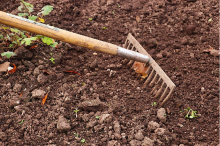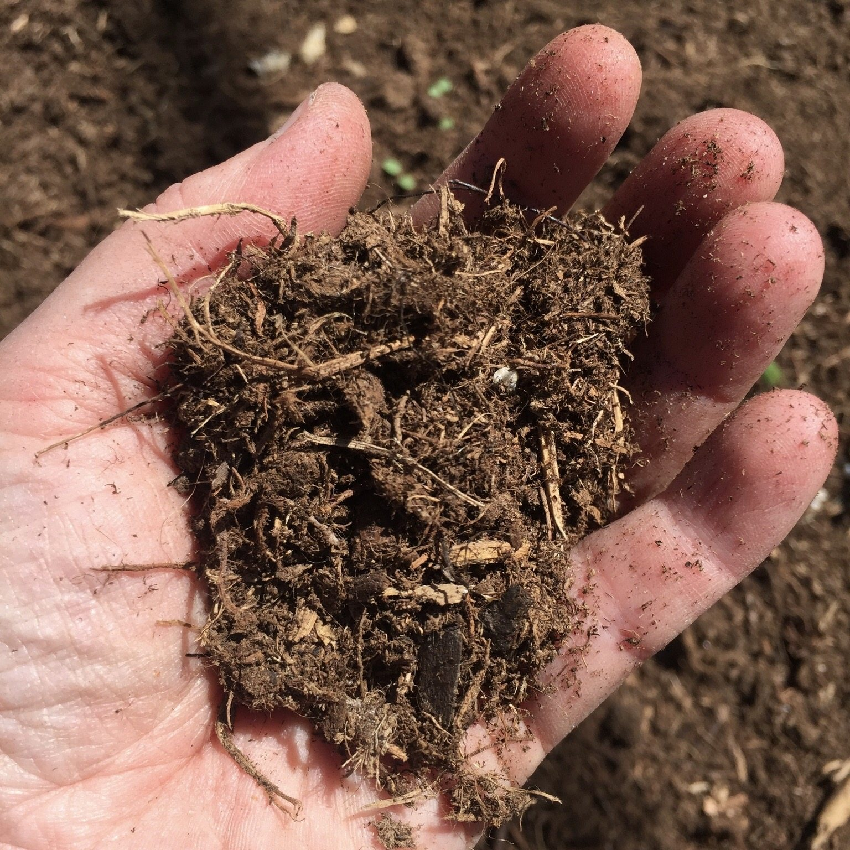Preparing the soil to create a healthy garden is more complex than choosing a site and digging holes to plant. First, you need to choose a location with good sun exposure, good drainage, and no root systems. Next, you need to test the soil to determine its sand and clay content. It’s also a good idea to take a sample to a garden center to check the pH level and nutrient concentrations. Then you will remove the earth, removing the rocks and roots. Lastly, you’ll need to add organic matter, and soil amendments (such as clay and sand), and flatten the entire ground before planting.
Check Soil Condition
Take a sample of the soil composition
Dig the earth with a shovel and take a handful of it. See what it is made of. It could be sandy, rich in clay, or just infertile soil. If it contains a lot of sand or clay, garden plants will not grow very well.
- The soil should feel fluffy like it’s filled with air, as this means it gets a lot of oxygen.
- This is also a good time to look for a lot of worms and insects, as this usually indicates that the soil is very rich.
- Depending on what the soil in your area is like, you can add soil correctors later so that it has the right composition.
- Generally, dark brown or almost black soil is ideal because this means that it contains a lot of decomposing organic matter and is rich in nutrients. Light brown or almost yellow soil has a lower nutrient content.
Check the nutrients
For best results, take a sample of the soil to a garden store to determine what nutrients it lacks and what its pH level is. You can also buy a home test kit, but it won’t be very accurate.
- The ideal pH is between 6.5 and 6.8. A common way to adjust soil pH is to add lime, but it is a lengthy process that takes 6 months to fully take effect.
- You can make up for the lack of other nutrients with fertilizer and compost, but we’ll discuss that later.
Assess the moisture level of the soil
When you are going to plant a garden for the first time (especially if you are doing it in early spring), you should wait until it has dried out sufficiently. If you squeeze a handful of it and it stays compact, it’s still very wet.
- Do this test once a week until the soil is dry enough to start preparing your garden.
- Soil with a high clay content compacts more, but this does not necessarily mean it is very wet.
Break Up The Earth To Prepare The Plot
Delimit the perimeter of your garden with stakes
Before you start digging, decide on the size and shape of the garden. If you will have more than 3 rows, be sure to consider extra walking space between each row. In the case of only 2 rows, you can take care of the garden from the outside of each row.
- Place 4 stakes on the ground to form the rectangle of the garden plot.
Remove the top 2 inches (5 cm) of grass
Use a shovel to remove any grass, moss, or weeds that are growing in the area where you plan to create your garden. Make sure you dig deep enough to remove the weeds at the root. You can go about 4 inches (10 cm) deep for this step.
- You can put all of this in the compost pile for later use, but you shouldn’t put it back into the soil until it has composted. You should also have a container ready to separate the compost from this layer from other compost you might have.
Remove the soil using a shovel or rotary tiller
For new plots, you should remove them to a depth of 12 to 18 inches (30 to 45 cm). First, dig to that depth with a shovel and then give the plot a second pass with a cultivator to break it up.
- As you dig through the soil, remove any large rocks, roots, or debris (eg, bits of metal, plastic, etc.) that you find. If the soil is very compact, you may need to make more than one pass to break it up.
- This is the most time-consuming part of the project, especially if you end up with a lot of rocks or other debris. That’s why it’s good to have a trash can nearby to throw away anything you find on the ground.
Adjust Soil Composition
If necessary, add lime or sulfur
Soil pH is one of the most important aspects of maintaining healthy soil that produces healthy plants. Be sure to use the information obtained when evaluating the land. Lime increases the pH level if it is too low, while sulfur lowers it if the pH is too high. [5]
- A garden center will allow you to discover the exact amount of lime you need for your garden. This depends on how big your garden is and how much you need to change the pH. Spreading lime requires a specific method, so don’t assume you just put a little on the ground.
- You should also seek guidance regarding the use of sulfur according to the needs of your garden.
Add other soil amendments as needed
When you check and have your soil composition tested, you’ll find out if you need to add sand, clay, or another topsoil to make it the best possible mix for your garden. This is something a garden center can be incredibly helpful for.
- Don’t go overboard with sand or clay, try adding a little at a time to even out the overall texture of the soil.
- You can add gypsum or perlite to aerate the soil if testing reveals low oxygen content.
- Sphagnum peat moss is a useful soil amendment if your soil looks too dry, as it retains moisture and gradually releases it into the soil.
- It may be necessary to add a little basic fertilizer to balance nitrogen, phosphorous, calcium, magnesium, and potassium, vital elements for healthy plant growth.
Turn the soil up again with a shovel or cultivator
Since you’ve added various materials to it, you want to make sure that everything is mixed evenly. This might require you to go through the entire garden plot 2 or 3 times.
- It’s a good idea to lightly water the soil after turning it a second time, so everything can get wet.
You may like to read 5 golden rules to enjoy traveling with a newborn


